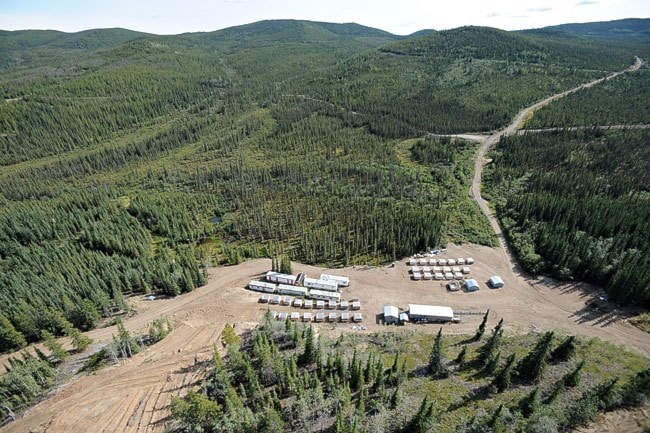A California businessman sees profits under the vast moonscape near Mount Sima.
Chuck Eaton, an investment banker, wants to drain all the magnetite from the 68.8 hectares of tailings at the former Whitehorse Copper mine.
The abandoned site is currently an eyesore, with grey dust from the tailings blowing up in wisps.
But, depending on how the Yukon government handles the proposal, it could be returned to greenscape because of the project, said Eaton.
“That would be, esthetically, the most pleasant thing,” he said.
Since the Chinese and Indian economies took off in the last decade, the price of magnetite, a form of iron ore, has skyrocketed, making the plan viable, he said.
When Whitehorse Copper closed down in the 1980s, the price for iron was much lower.
Eaton’s plan is to mix the tailings with water to create a slurry, and then send it into giant drums lined with magnets.
When the drums turn, the magnetite - the most magnetic naturally occuring substance on Earth - would stick to the sides and be collected.
The separated magnetite would then be trucked out to Skagway and shipped to the Far East.
Eaton is pushing a similar scheme at abandoned copper mines in Utah and New Mexico.
His company - Eagle Industrial Minerals Corporation - also operates magnetite mines on Vancouver Island and in Alaska.
He held a public meeting at the Mount Sima ski lodge Tuesday night to hear concerns.
Only a handful of people attended, and there were virtually no complaints.
One woman wondered if the iron-ore price was stable enough for this project, which would likely last six or seven years.
The price, currently $150 per metric ton, is not expected to drop much, said Eaton.
Even if it dropped by 30 per cent, the project could still continue, he said.
“If the price went down by half, we would no longer be enjoying ourselves,” he said.
There were also mild concerns about noise on the Mount Sima Road, caused by trucks hauling the ore.
The loudest sound would be the back-up signals from excavators, said Eaton.
Another problem could be the 126 new country residential and service industrial lots planned for the road.
City planner Mike Gau could not be reached before press time to talk about the city’s concerns.
Eagle Industrial Minerals has spoken to the Klondike Snowmobile Association about redirecting a trail currently crossing over the tailings, said Eaton.
The regulatory process is new ground for the Yukon government, because no one has ever dug up a tailings pond for profit before.
“It’s been a little difficult for the government to get their heads around this,” said Eaton.
The Quartz Mining Act won’t apply, but the Energy, Mines and Resources Department is cribbing some parts of the act for the project.
The government wants to use progressive bonding for the project, said Eaton.
That means the more tailings moved, the more money Eaton must fork over were his business to go belly-up.
The royalty scheme will be identical to the terms in the Quartz Mining Act, said Jesse Devost, a spokesperson for the department.
There are still mining claims that hold subsurface rights at the site.
Eaton temporarily owns them pending the approval and completion of his project.
When he’s done, he’ll return the claims to the original owners, he said.
A reclamation plan has also yet to be created.
Depending on the government’s wishes, he might return the new tailings to the grey plateau where they now sit.
But he’d prefer to stuff them in a series of holes where old underground workings from the Whitehorse Copper days have collapsed.
If he fills the holes, the total tailings at the site would shrink from 68.8 hectares to 12.1 hectares.
Otherwise, the tailings could be flattened and covered with a gravel liner and the site could be used as an industrial property.
The project would run seven months of the year because the tailings can’t be removed when there’s too much snow.
The 50-tonne trucks would run 24 hours, totalling 1,500 tonnes leaving the site daily.
A buyer hasn’t been confirmed yet, but it will be sent out of Skagway, said Eaton.
The market for iron ore in North America is not good enough, he said.
He expects the 12 to 18 month-long permitting process to begin soon.
Eaton is funding the project completely out of his own pocket.
He owns Eagle Capital Corporation, an investment banking service that provides funding for the construction industry.
Both his businesses are based in the northern Californian city of Mill Valley.
The project doesn’t raise too many environmental concerns, said Lewis Rifkind, mining co-ordinator for the Yukon Conservation Society.
“It’s a nice thing to have someone rework old mines,” said Rifkind.
But until the project’s details are brought forward in the regulatory process, the society won’t know for sure, he said.
Contact James Munson at
jamesm@yukon-news.com
